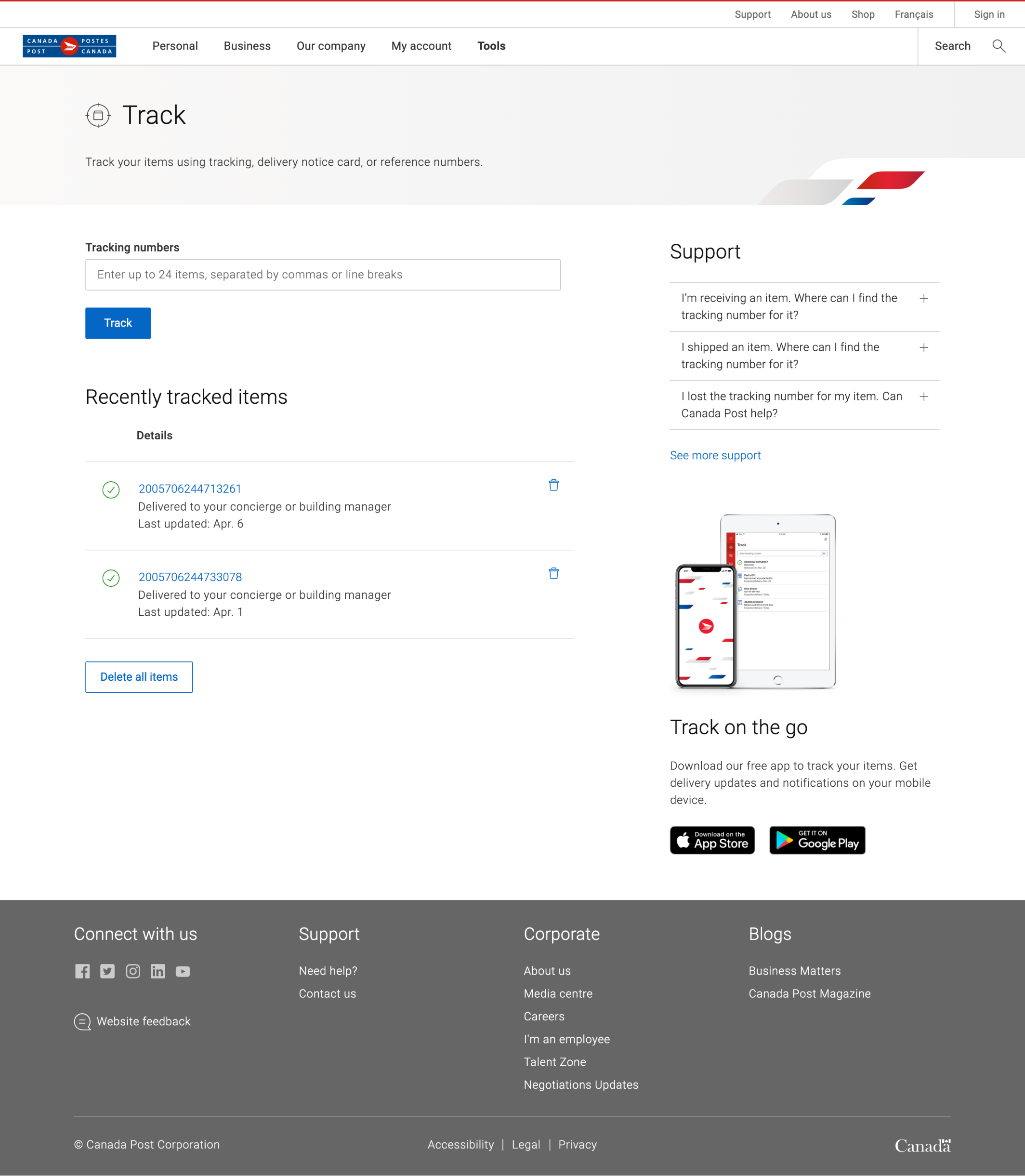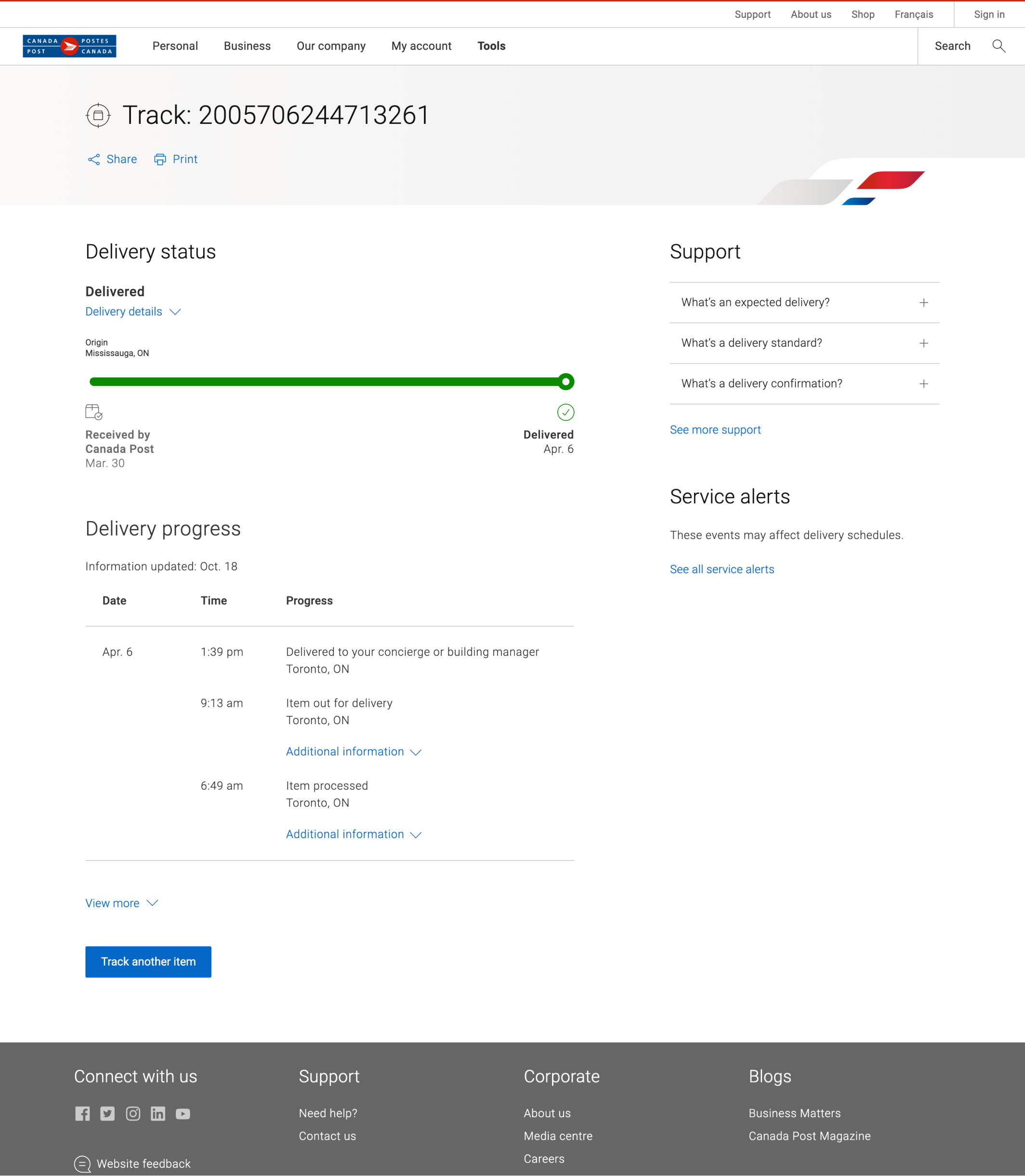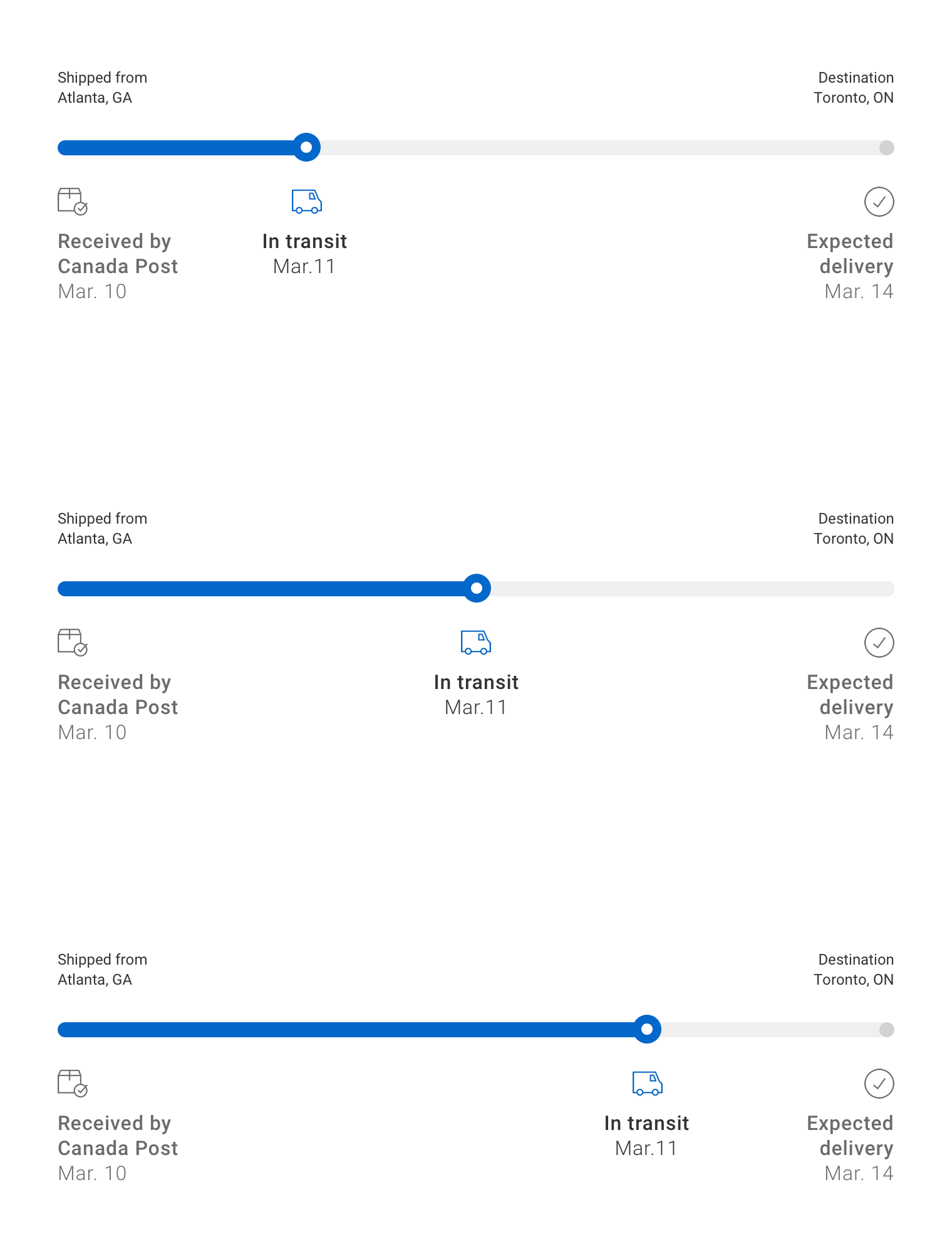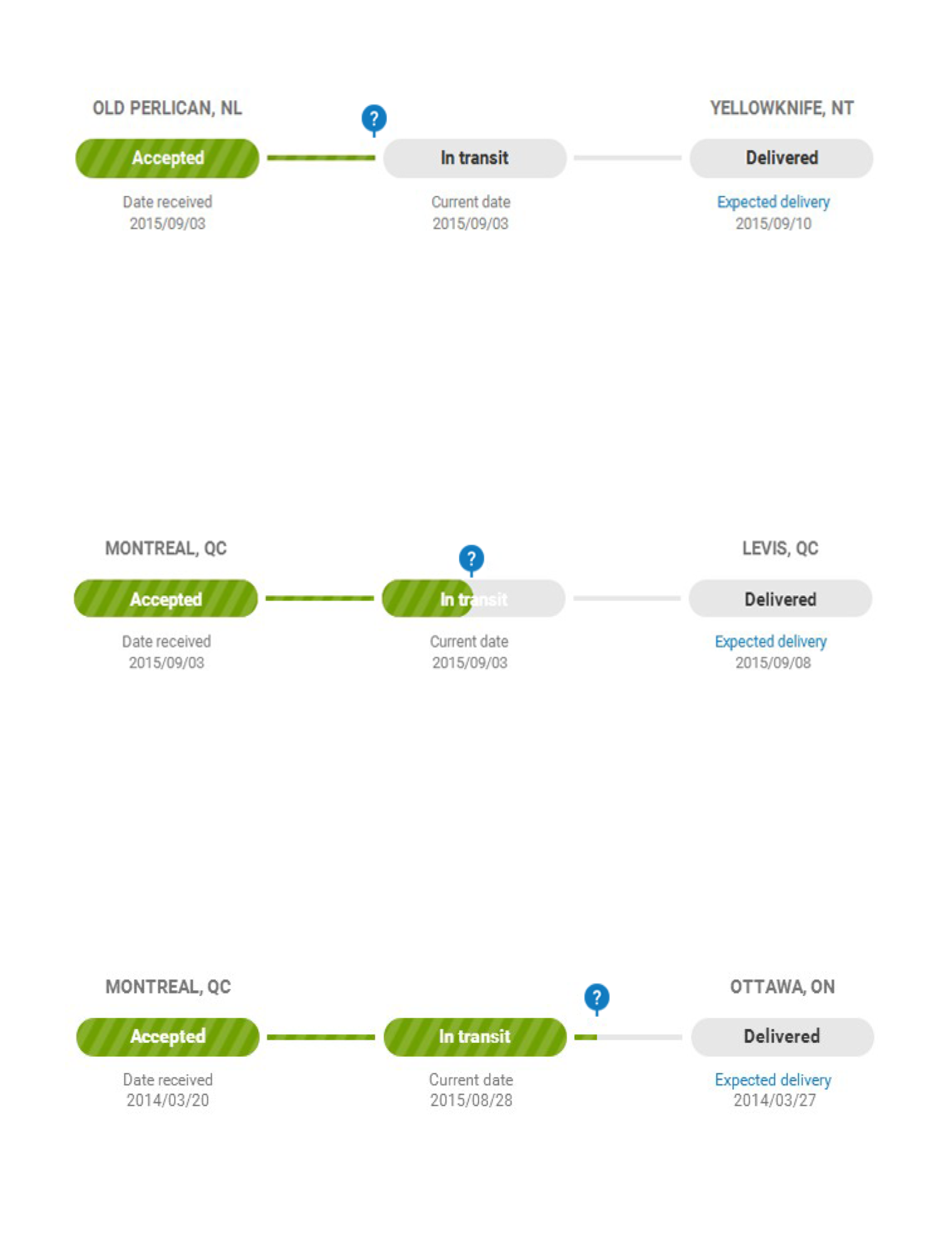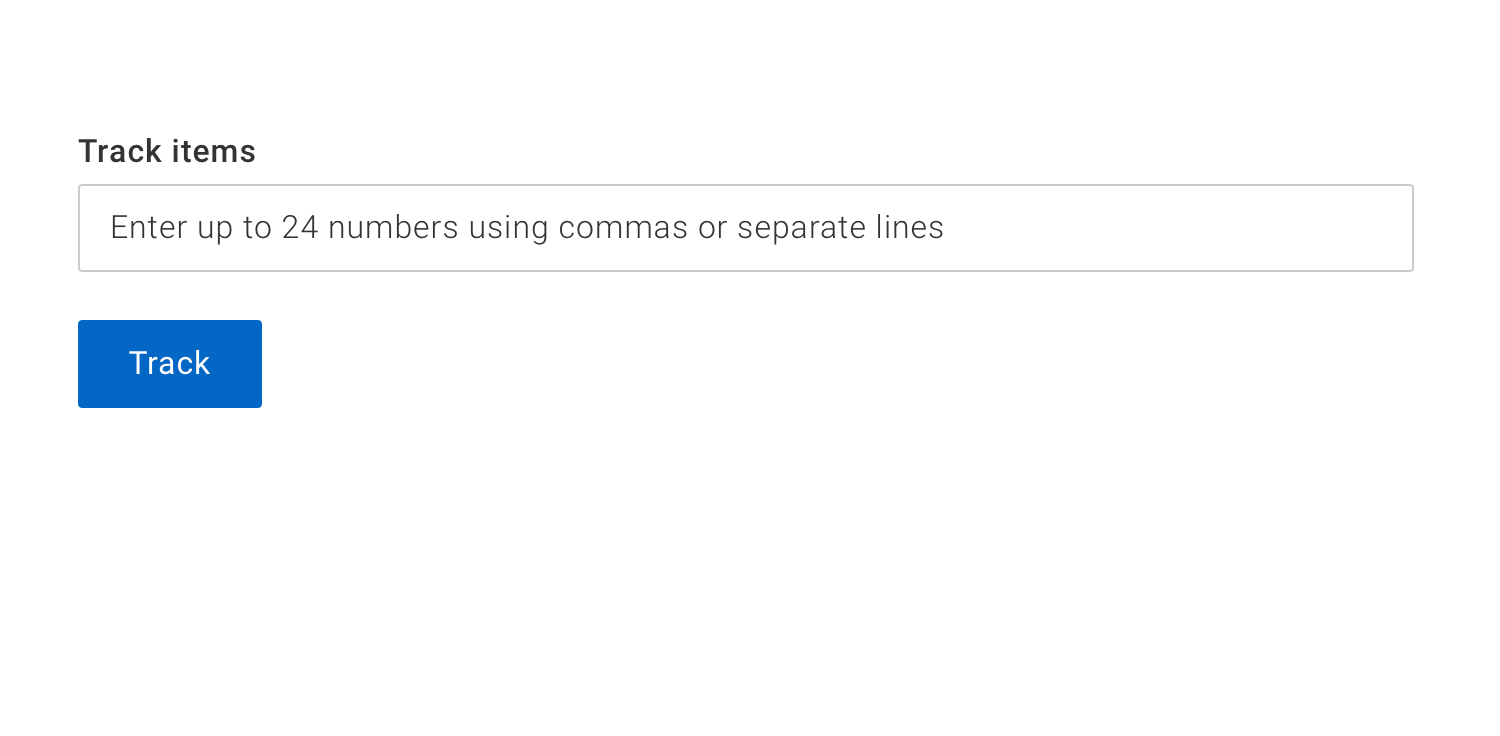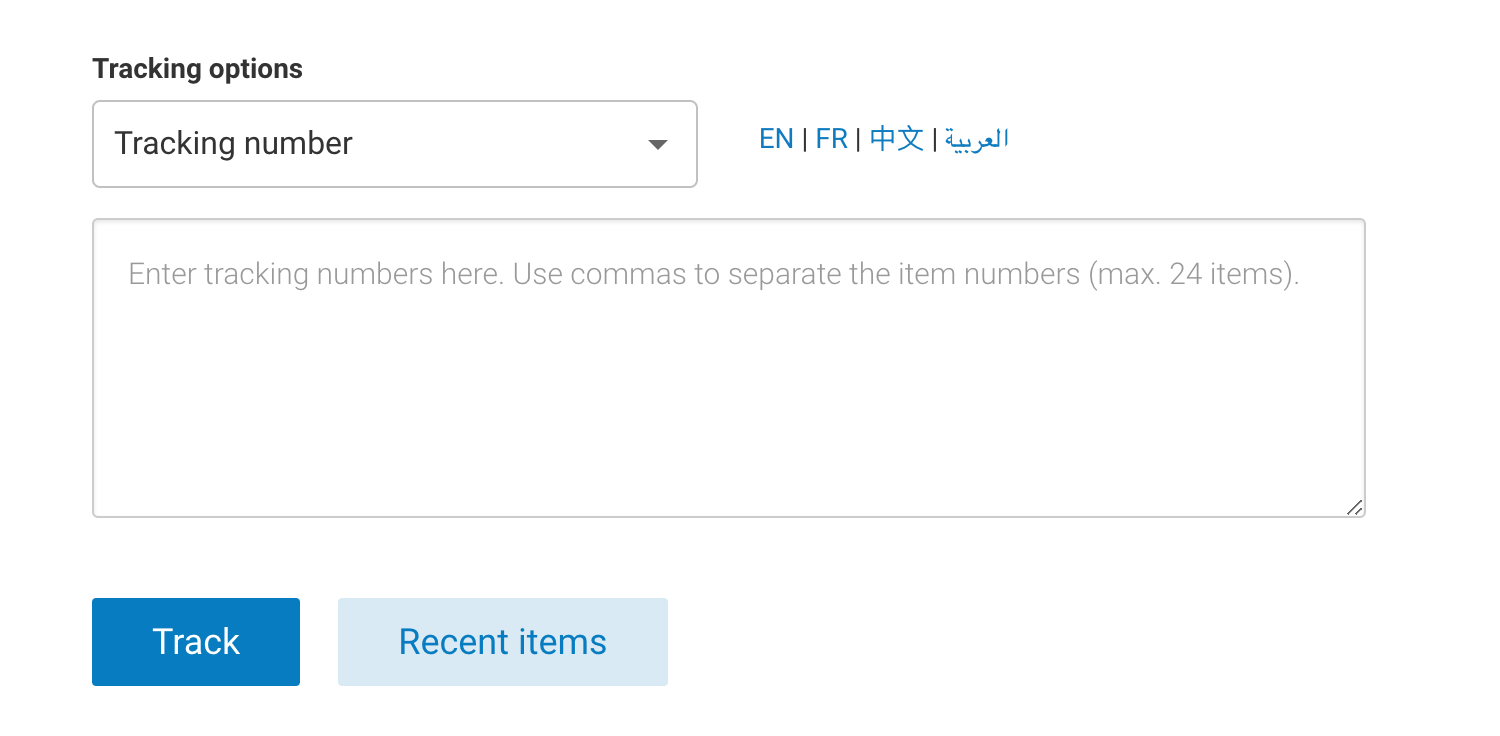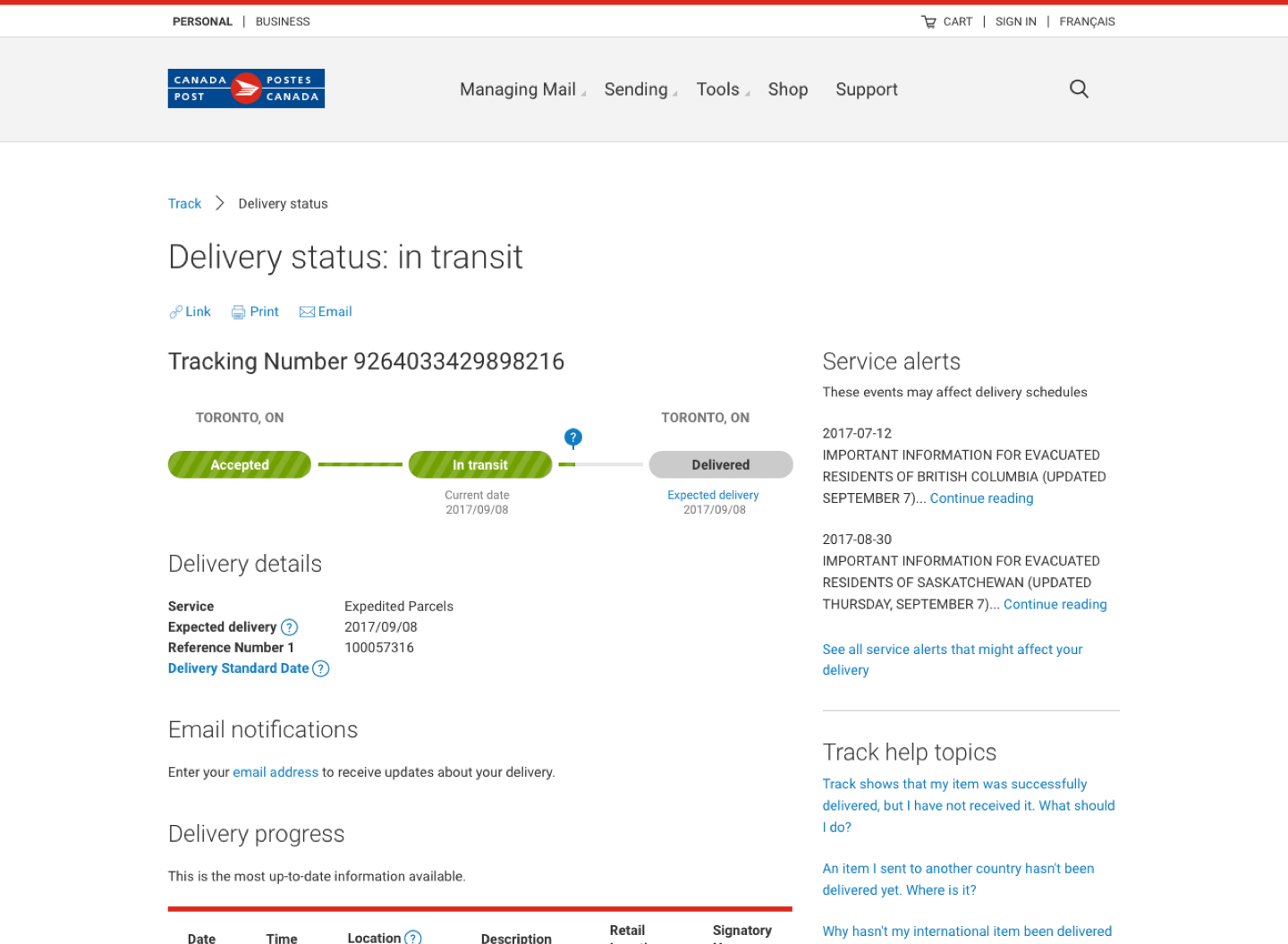Overview
If you’ve tracked a package on www.canadapost.ca/track then you’ve already experienced some of my work first-hand. Launched in Feb 2019, the new Track tool receives 1.5 - 3 million unique visitors per month.
The work began in 2017, when a complete overhaul of canadapost.ca was underway. A new design system, Mercury, was being developed to establish the guiding foundation for updating Canada Posts’s numerous tools and web pages. As the most visited web tool for Canada Post, Track became the first candidate to be redesigned using the new design system.
My role
As a product designer embedded in a scrum team, I owned and led the end-to-end design process for the new Track tool. Ensuring on-time, detailed, and high-quality deliverables within an agile framework, I collaborated with a visual designer, content strategist and UX researcher throughout the life of the project.
The transformation
Before
After
Objectives
Redesign the Track tool to align with the latest design system guidelines.
Declutter content and clearly communicate tracking status information to users
Provide an accessible tool that meets WCAG 2.0 AA level standards.
Incorporate two new features, the first of a series of desired features identified through user research conducted by Phase 5:
1. The ability to pay duties and taxes in advance of receiving an international package.
2. The option to specify delivery instructions for when no one is home to receive an item.
High-level process
Discovery
A story mapping session with the project’s scrum team, led by our scrum master, helped map out the MVP user stories for building the new Track tool. These user stories were anchored with proto-personas provided by business stakeholders. Design exploration for the new tool focused on a comparative / inspiration analysis of tracking tools that address similar use cases. This included tools offered by companies such as Fedex, UPS, Amazon, USPS, Australia Post, Pizza Hut, Dominos, Uber and more.
Exploration
Leveraging weekly design critiques, the design was continuously refined through feedback from the extended design team. Some of the major design decisions out this process covered the following:
Progress bar
Building a new progress bar that clearly conveys status information, introduces iconography, and reduces visual noise.
Track field
Simplifying the track field by removing the need to manually select the type of tracking option. Allowing users to immediately search by tracking, reference or delivery notice card numbers.
Information and visual hierarchy
Improving the information and visual hierarchy on the status page to ensure users are immediately able to identify the status of an item, notice the support section, and still be have secondary information easily accessible within the collapsed delivery details section.
Validation
Collaborated with UX researcher on three usability studies in Dec 2017, April 2018 and June 2018. This included drafting up the test plans and building the prototypes to be tested.
17 users in total were interviewed through these studies.
The System Usability Score (SUS) was used as a metric to measure how the design was progressing. Starting at 79 in the first round, dipping to 77 in the second round, and reaching a score of 96 in the final round.
Delivery
Once the direction was solidified after usability testing, we proceeded to work in 2-week sprint cycles to build and deliver finalized assets for user stories. Working with the product owner to prioritize the backlog, most visual and content assets were delivered at least one sprint cycle in advance.
Each user story’s assets were delivered with WCAG 2.0 Level AA compliant design specifications. In addition, I assisted developers and QA analysts in understanding how to meet guidelines.
Prior to being passed as done in each sprint, user stories are QAed by the visual designer, content strategist and myself to ensure design specifications are being met.
Outcome
The new Track tool launched in Feb 2019, immediately welcoming millions of visitors to:
Our first tool leveraging our new design system. The process was not clean or easy, but through it we also evolved our design system based on the needs of the experience we were building in track.
A fully WCAG 2.0 AA compliant tool. Having personally attended accessibility workshops and training as part of my personal development, I took it upon myself to champion the delivery of a compliant tool at a time when the Canada Post Digital was at the infancy of its Accessibility knowledge.
Pay for duties & taxes or set delivery instructions. At the time of launch, within the first month these functionalities were being utilized by just over 100k users.

